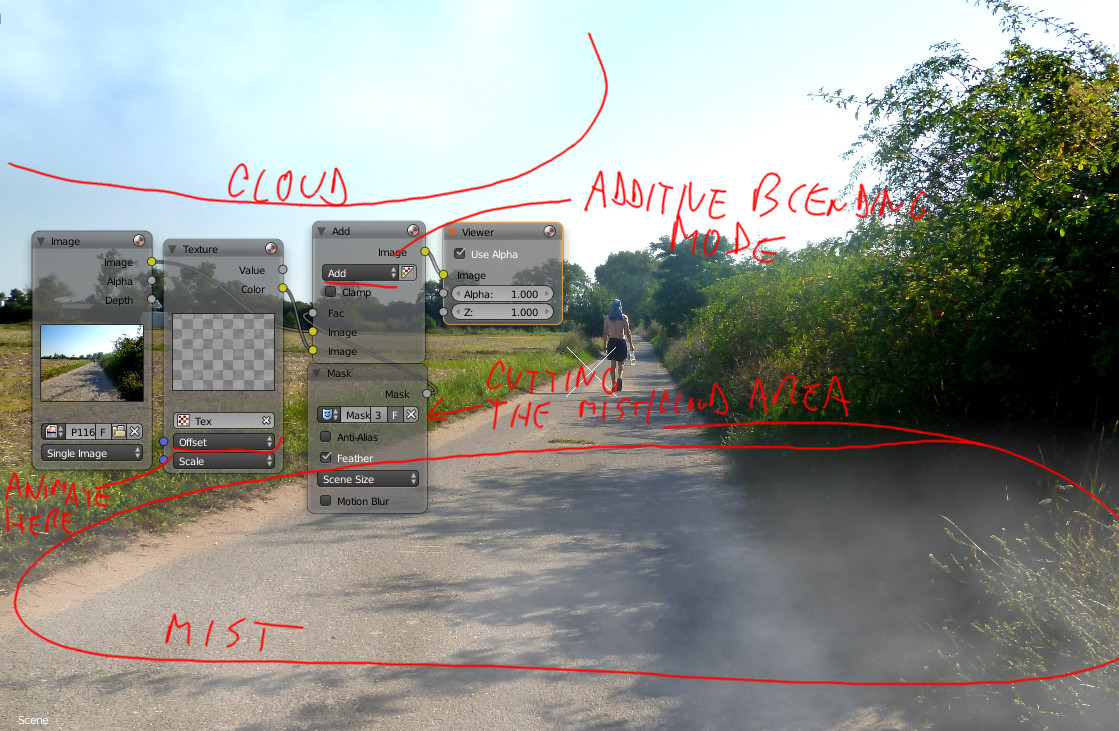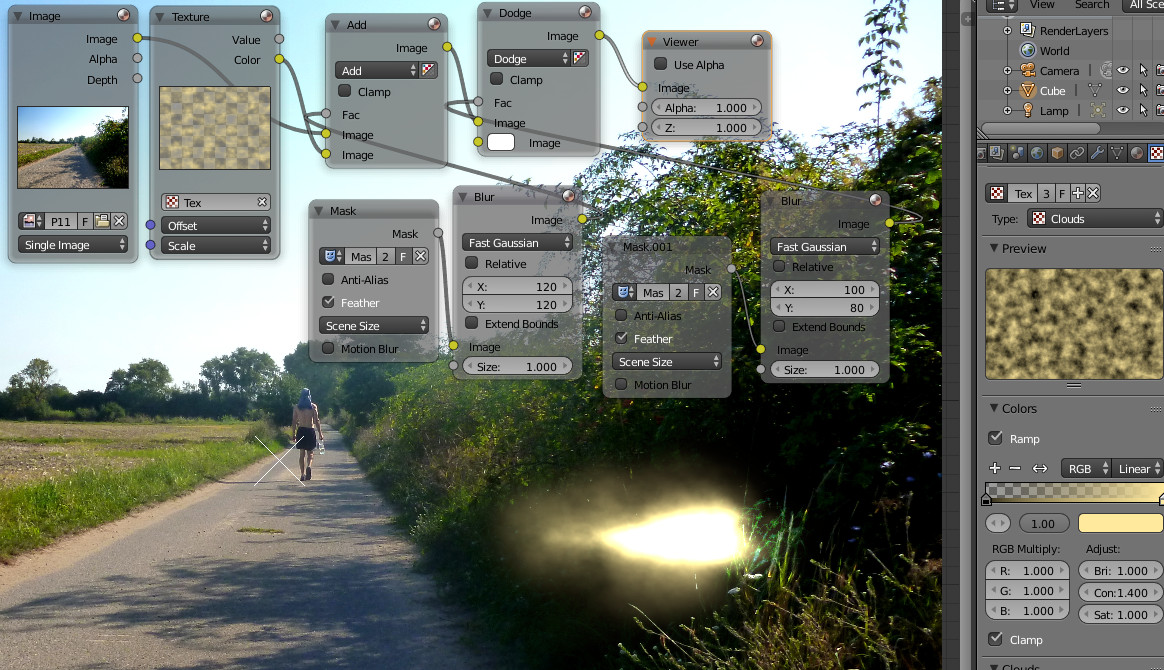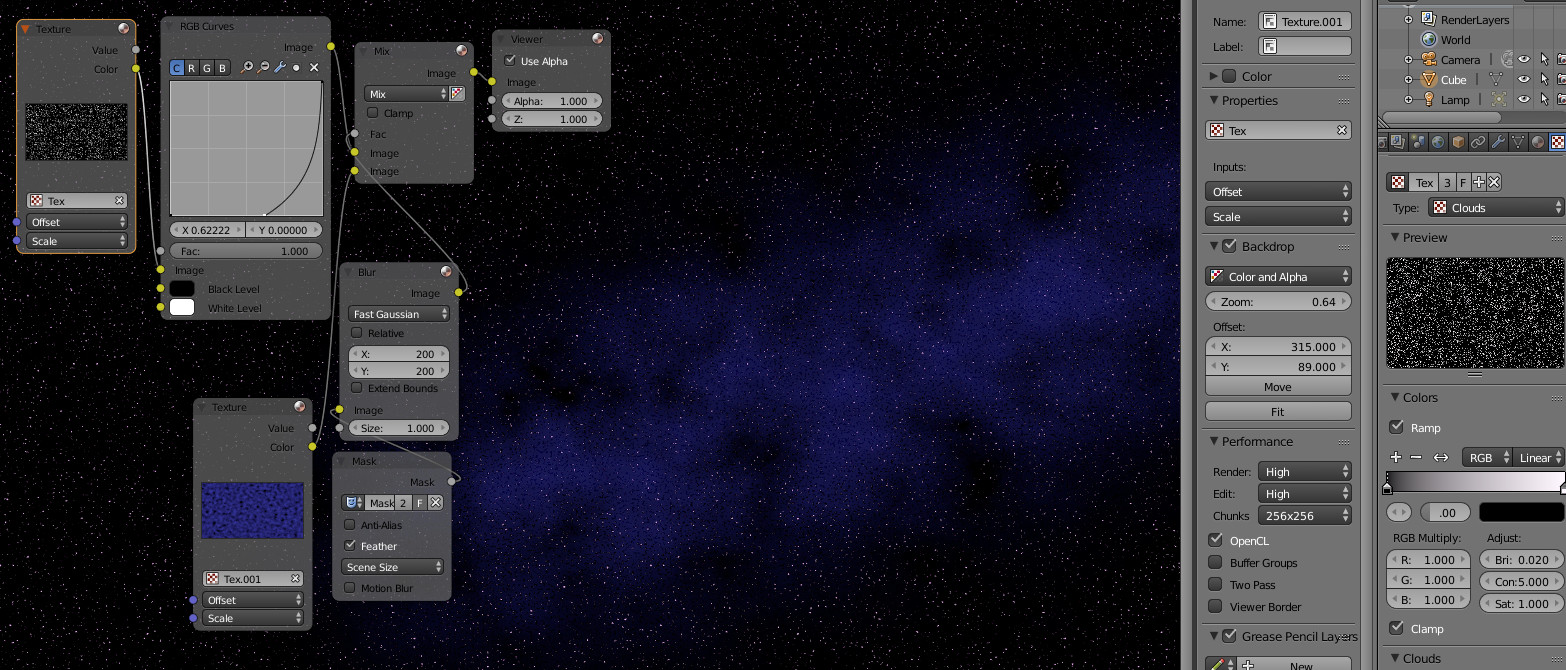Simple Fire,Smoke,Energy - Blender & Fractal Noise
There are occasions when we need to make a simple effect that is not supposed to look ultra realistic (but it can if you spend some time tweaking it :-)) and we don’t need any 3D movement of this effect. If you need to make some simple flames, fire, energy auras, mist, fog or clouds, then there is this almighty tool called the fractal noise. There are many variations of noise types based on perlin noise and some random generators. We won’t talk about how it works but rather about how to use it in Blender. (also possible in other software such as Adobe After Effects)
I use fractal noise based effects really often, usually as a part of a more complex effect. You can use it for some additional smoke puffs, muzzle flashes, and energy beams that appear around some other effects. This tutorial’s purpose is to give you the idea of how to use fractal noise in your compositing. All the results shown here are just quick examples. You can get much nicer results by playing with it for a while. The values of brightness, contrast and all other attributes also depend on the background image. Especially on how dark/bright it is.
First let’s prepare this node layout in Blender cycles. We have put in the composition an image as the input node and mixed it with now empty texture node.

Then we set up a new Clouds texture where we can play with the options such as scaling the noise, depth (quality/details), type of the noise etc.

The simplest effects are clouds and mist. What we want to do is that we add a mask to cut the texture where we need it and then animate the position so the texture slowly moves horizontally like a mist. We also need to change the blending mode of the mix node to add or screen to make it more fog like.

What if we change the shape a bit and add more brightness to the texture? Also coloring it to orange/yellow and here we go. A muzzle flash! I have also added another mask with white color to create the muzzle flash core. The fast blur nodes are there because for some reason it makes the mask feather smoother than the default feather border in the mask editor.

If you need a really nice looking fire and smoke, use the fire and smoke Blender simulation instead but for some supporting fast rendering effects like an aura around a fireball or something, you can color the noise by fire looking ramp. I have also added a blurred brighter texture over it to highlight the flames and used the same texture for the black smoke above. You can also animate the y offset to make the fire and smoke rise up.

You can also use some different kinds of noises like voronoi which are quite useful for some energy auras and beams.

Another cool usage is to indirectly use the noise to modify another effect as its input. A great example is creating an air turbulent displace like above a fire. Simply connecting the noise to the displace node makes the magic.

What about scaling the noise to the minimum, setting the contrast a bit higher and making the whole result a bit darker? Wanna have some space scenery?

So I think this is enough for now. What I wanted to show here is the fact that fractal noise is a great tool in many various effects and can be transformed into many great and useful shapes. For more complex effects it’s not a good choice but always can be used to add some dynamic elements around and create some quick effects.
Published:Keywords: tutorial,how to,muzzle flash,mist,fog,masking,compositing,compositor,special effects,vfx
#blender #blendertutorial #blendervfx #vfx #filmmaking
Privacy Terms